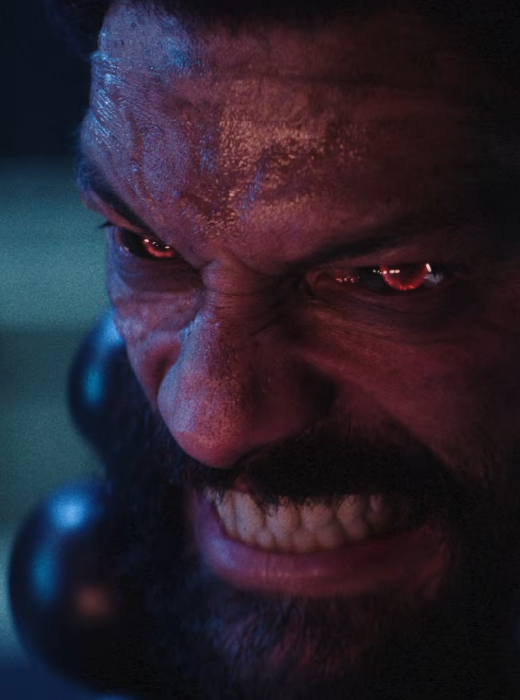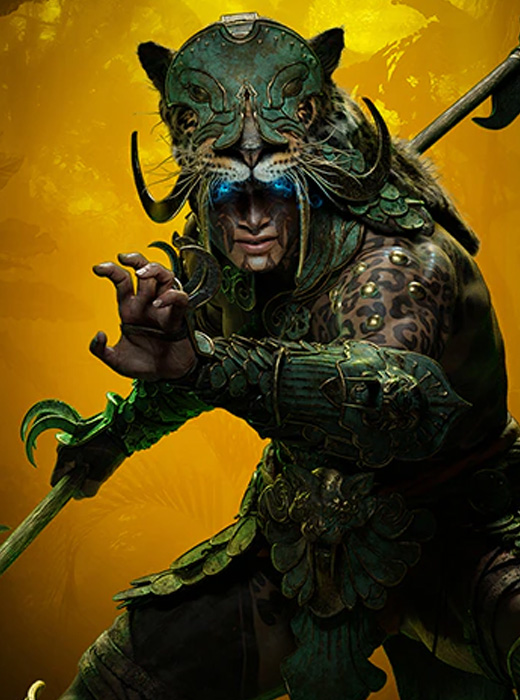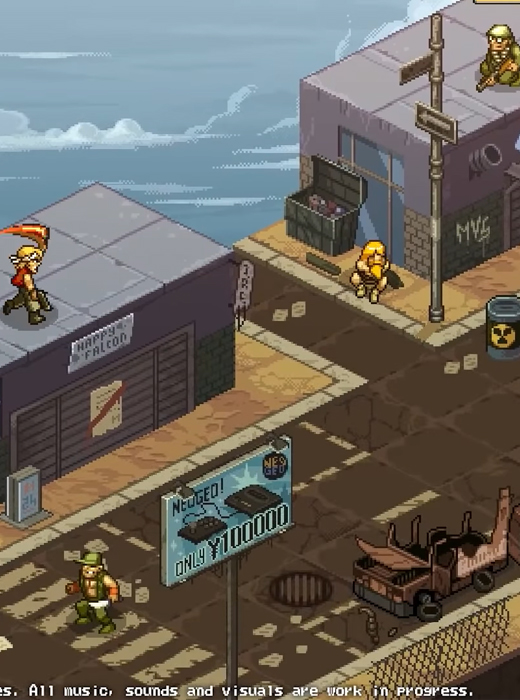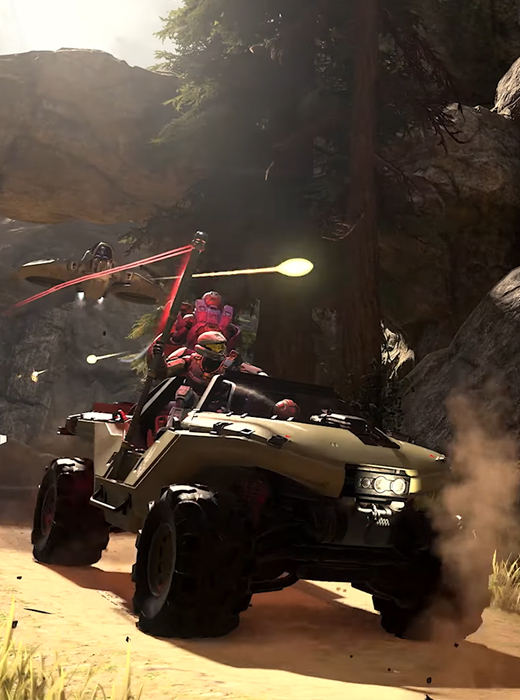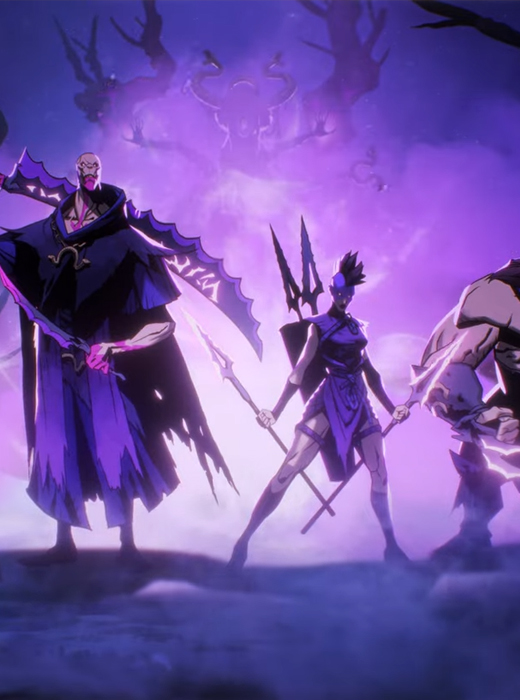Community Uncharted 3 Interview with Evan Wells and Amy Henning
By iorilamia —
December 19, 2010
Tags:
interview
news
uncharted-3-drakes-deception
Henning and Wells speak
Down at GameInformer they got a pretty big interview with Naughty Dog co-president Evan Wells and creative director Amy Hennig . Extremely informative, lots of info here containing how they got ideas for things, how they made stuff work, software, and what is install for the future. Good seeing interviews like this opposed to the 3 sentence ones we see so frequently with Capcom representatives and shit. Some stuff from interview, glad they aren't thinking of incorperating the Move, screw that crap,possible xbox or PSP port? Said the game wasn't really married to a system, but currently they are focused on PS3, and that they ARE taking the feedback for multi-player and working on DLC ideas is great to hear. Enjoy guys.
(the interview is huge, heres original link if you prefer to read it over their http://www.gameinformer.com/b/news/archive/2010/12/17/exclusive-uncharted-3-interview.aspx )
-Credits to Byran Vore @ GameInformer-
After such a tremendous hit like Uncharted 2, how do you come back to the drawing board and try to top that?
Evan Wells: It’s a tall order. We’re our own harshest critics and we set out to make a game that we thought would be fun to play. To get the reception that Uncharted 2 got was definitely a big surprise for us and now we do feel a pretty big amount of pressure externally but I don't think it exceeds yet the pressure we put on ourselves. So we have a lot of creative and passionate people here who just wanted to start hitting the ground right away after they came back from their vacations. I think what they put together for this demo is just the tip of the iceberg of what you’re going to see in the rest of the game.
Amy Hennig : What’s nice too is what we typically do when we’re conceiving the game is we go back and forth between what would be awesome and let’s do this in the story and see how they complement each other. But after Uncharted 2 we’d added so much to the engine that enabled us to do some set pieces that we couldn’t have considered before and so being able to kind of look at the genre of adventure movies and stories and thinking about all of the conventions like escaping from a burning building -- you know, something that we wanted to tackle but obviously didn't have the opportunity to or didn't have the technology to in the past.
So sometimes we just come to the table saying, “We've got to do one of these. We’ve got to have an escape from a burning building.” Well, where should we put it in the game? Where are they and why is it burning? And we’ve got lots of set pieces like that that we have planned. So you try not to repeat yourself but at the same time you want to make sure those peak moments are in the game.
Wells: A lot of that comes from technology too. Like we’ve got some of the most amazing programmers out there. People asked us whether we could get more out of the PlayStation 3 after Uncharted 2 and they set to work and have proven that they can. Like Justin mentioned we’re doing everything in stereoscopic 3D and that took months and months of continued work to further optimize the engine to get more performance to allow that and to allow even more particle effects and more physics and dynamics so once we have all of these new bells and whistles that the programmers give us, the game designers and artists just get to go crazy and come up with the cool set-pieces that are going to make the game really exciting.
Every Uncharted game has a major historical connection at the heart of the mystery. How do you decide which historical aspects you’re going to include in the game?
Hennig: We start from a blank slate every time and just start reading. Kicking around some ideas. Seeing what we stumble on. We read a lot of books. Flip through a lot of books. Skim a lot of books. But also, honestly, we end up narrowing it down just by choosing where we want to go. For instance, with the last game we knew before we wanted to do the story that we wanted to tackle snow and ice and all that stuff. And so that told us, “Okay, well we know what part of the world we’re probably going to.” And that gave us the idea of Shambhala and Tibet and just started informing the story.
So then we could look at that and go, “If we want to go to the Far East and end up going after Shambhala, who would be an interesting explorer to dig into?” Then we read up everything we can on Marco Polo because he’s the guy that went. And then we find some interesting mysteries.
Wells: We also have a rule of picking somebody that you’re going to know from your fourth grade social studies class. We don’t want an obscure historical figure that people are not going to be able to just know right away.
Hennig: When we set about thinking about the desert for story reasons we knew we wanted to readdress the whole Francis Drake thing. But also when we started talking about wanting to do a desert environment as our destination that narrowed down the list pretty fast and we just sort of glommed on to T.E. Lawrence because we thought, “Well, everybody knows Lawrence of Arabia, but they don’t know much about him.” He’s really a fascinating character. And just through reading a bunch of different materials we just sort of stumbled upon this whole idea of the Atlantis of the Sands and how it was spread through all of these different mythologies and stories. You explore by reading and doing research and you find it just sort of comes to you. It’s interesting.
What made you want to go back to the Francis Drake mystery?
Hennig: Because it’s a huge part of Nate’s story – this idea that he’s descended from this guy and the parallels in their stories and their lives and what he aspires to and all this. We wanted to dig more into Nate’s story and his history, which people have been asking for. We needed to go back to the well on this thing that’s obviously so important to him.
Are we going to see any flashback scenes or levels where you’ll control a younger Drake?
Hennig: Well, we don’t want to talk about anything here today other than the stuff that we’ve shown. There’s so much to the story that we obviously could talk about, but then there’d be nothing to talk about for the next several months. Suffice to say that this relationship with the two of them is important. And I think people have already kind of tweaked at that just from playing the previous games and want to know more about what it is that makes these two guys tick and how their partnership works. Obviously, it’s not an uncomplicated relationship so that means we’re digging into that a little bit, but we can’t really talk about how.
How did you decide to support stereoscopic 3D in the game?
Wells: Early on in the project, Sony approached us with the opportunity to explore the stereoscopic 3D stuff. We got early access to prototype 3D TVs. And we talked to a lot of the other first party developers that were also starting to explore the option and worked out the best techniques to make stuff look really good.
First, we were skeptical because it was going to be a lot of work. You’ve got to basically render two images in the time that you’re ordinarily rendering one, so it takes a lot of trickery to pull it off in optimizations. But once we actually got it up and we saw the effect and applied a little bit of tweaking to it, it was something that we just knew we had to do because it really did enhance the experience. It was like, “This is something that you’ve never seen before.” It’s a way that just even further immerses you into the experience and that’s what we attempt to do. We want to create the experience where the player doesn’t want to put the controller down. They just want to keep seeing what’s next and I think that 3D experience brings the game even further.
Can you give any teases on how the subtitle Drake’s Deception figures into the plot?
Hennig: If you break down all the permutations, it could mean lots of things. It could be either Drake. It could be being deceived. It could be being deceitful. It could be an object that’s used as a deception. There are multiple layers. There isn’t one meaning inside the game. There are multiple layers to the meaning even inside our story, which is why we like the abstractions of the subtitle. I think once people get a chance to play it they’ll realize what we mean by that – that there are lots of ways to interpret what that means inside the story.
A student made a mockup of Uncharted 3: World of Deceit that was picked up by Amazon France and people thought it was real. He quickly denied any connection to Naughty Dog, but the title does sound kind of similar.
Hennig: Yeah, it’s totally a coincidence. He’s just a fan. He did it as a school project as far as I know. He’s really talented. But it also is coming out of a logical place which is we’ve been exploring this idea with the kind of people that Nate has around him and it’s sort of this fraternity of criminals basically. The last game, Among Thieves, it was playing off the idea of the company you keep and “Is there honor? Is there not?” I don’t think it’s an illogical place you go to say he lives in a world of deceit.
It seemed like a logical progression from where we were last time. And obviously it is. It’s part of our world and our story too is that he’s always having to weave his way through these webs of deceit in terms of who he can trust and who he can’t – whether he can trust his own eyes and trust other people’s intentions.
Wells: When we saw it, and the guy was trying to deny, “No, I really didn’t work on the game!” As soon as our title comes out no one’s going to believe that guy. [laughs]
You’ve said that you chose the desert partly for the technical challenge. What interesting aspects of sand have you found during development?
Hennig: It’s interesting because it’s like a solid and a liquid kind of, if you’re going to put it in simple terms. Having to figure out not only how is it going to look aesthetically pleasing with all of the sparkling and the drifting of the fine sand over the surface and all that, but how it has to shift under foot and how it can be poured and things like that.
Wells: And how it brutalizes the environment with wind, sandblasting anything that comes in contact with it. People too. We thought it would be a really great environment to put Drake in and a great technological challenge for our programmers.
Hennig: The artists and programmers love that. They really want something they can dig into and tackle that hasn’t been done really well in the past. Just making a big list of all of these little properties that they have to figure out. Again, it’s not just the aesthetics. It’s all the physics too. And then how that informs the gameplay that’s a whole dialog that goes back and forth.
The initial demo and trailer focus solely on Drake and Sully. Will we see Elena or Chloe or more romance in the game?
Hennig: Obviously, that’s a huge part of the adventure genre. It has its roots in romantic comedy. Not the way we think of it today, but more like from the 30s – that kind of stuff. There’s a little bit of screwball comedy aspects of people in these relationships and the tension, attraction and repulsion, and all that stuff. Like we said, part of the franchise is about this galaxy of characters around him that all operate in this world in one way or the other. This fraternity of thieves that he essentially lives with.
Wells: And they all give him opportunities to expose different parts of his personality and to test him in different ways. We will have returning characters. We’re not talking specifically about who they are, but some of them are dead so you can count them out.
Hennig: And lots of new characters as well because you want to keep exploring new relationships and all that. But we just thought especially after some of the feedback that we saw, and you always have to take the feedback you read with a grain of salt because you don’t want to start losing your internal voice by reading everything and trying to design for everyone out there. Every reviewer and every fan. But people really wanted to see more. They felt like they didn’t get enough of that relationship between Drake and Sully. Tha it’s fundamental. We’ve explored the whole romantic triangle thing in the last game, not that there isn’t more to that, but it felt like the story about Sully and Drake had to be kind of diminished to really tackle that story. So this time we wanted to shift the focus.
Drake was in rough shape in the last couple of games. How bad does it get for him this time?
Wells: I think it’s something that’s definitely a hallmark of our game is to put Drake in rough situations and see how he perseveres. That really exposes a key part of his personality – that he’s tenacious and gets by by the skin of his teeth. He’s not a super warrior. He doesn’t get out without a scratch on him.
Hennig: It’s one of the ways you raise the stakes in a story is to see that these characters are vulnerable. They can be hurt. They can be killed. You can’t just stick with the stakes being, “Will we get the treasure or not?” That doesn’t last you very long in the story. It’s got to be upped very fast. The Die Hard movies are a good model for us as well even though they’re in a different genre but that idea of somebody who’s thrust into a situation that they have to persevere through. You don’t get to go and take a break and have a shower. That you just see the degradation of the hero as he pushes himself right to his limits, I think that’s a big part of Drake too.
Wells: We always try to hit that point in the story where he’s past the point of no return.
The demo already has full voice over from the principle actors (Nolan North and Richard McGonagle), how early does this process start for Naughty Dog and why is it important?
Hennig: Pretty early. In each game we’ve started shooting and recording usually about August 1st more or less, kind of late summer.
Wells: We try to get through our preproduction and that can last from anywhere from four to eight months. It’s a little amorphous, but as soon as we start to turn that corner and we’re trying to create real levels. I mean, it’s such a part of the experience that you can’t really even test to see whether you’re on track in comparison to other games unless you take that step and get the real actors in there. They’re such a part of the team.
Hennig: They really are a part of the team. It’s a really different relationship than most developers have with their casts because they do work with us for over a year on each of the projects. Obviously, we get past the preproduction phase. That’s their downtime. Then it’s just go, go, go.
They know their characters so well. Nolan, we’ve been working with him for four years now and Richard, I mean, anybody who was in the first game it’s an ongoing four-year relationship. And it’s not like we just book a few dates or we bring them in and do a bunch of stuff. They stop by and hang out. We see them every couple of weeks to do another session usually over the course of the project. As you can see, we’ve already been on our stage shooting.
And then the VO, for something like this the reason it’s so grounded and so suitable to what’s being demoed is we basically ADR the entire game. Whereas mostly games will go in – it’s time consuming and expensive so thank you, Sony – but most games will go in and they’ll have scripts with a bunch of canned stuff that their characters can say like “Grenade, watch out!” right? Obviously, that comes into play and then they’re done. They’ve got that stuff and it’s going to be implemented.
We take the video of the gameplay into the studio and the guys sit in there and they watch it and they dub it in real time. We’ll just run it over and over and over and we’ll script some of it, some of it they just improvise but that’s why every little bark and scream and shout that’s just them sitting in their chairs watching the movie and dubbing it.
Wells: And then we have an audio designer whose full time job is to sit and take all of those recording sessions and chop up the files and then go through and script all of those moments so that every time he jumps and grabs an edge there might be a specific grunt for that catch.
Hennig: And what’s so nice is because we work so closely with them, I mean, it would have been a huge mistake for us not to invest the characters with the actors’ personalities. That’s kind of what you do when you cast is you then adopt the persona of the person that you’ve cast rather than trying to shove that square peg into some round hole you’ve conceived. It’s interesting because all of the actors kind of have the relationships with each other that you see up onscreen. There is this sort of paternalistic thing with Richard and Nolan, very teasy.
It’s just kind of natural for them to just play that out into the microphone or play it out on the mocap stage. And a lot of the events that you see playing out too are them. I mean, they’ve mocapped. It’s not just coming in and doing the cutscenes, but all of that business with, “Oh, my foot’s stuck” and running up and down the stairs and “I’ll help you” and all that, that was all them performing it. So you get that signature. It’s not just the physical signature but it’s the emotional signature too.
I know you guys aren’t talking about multiplayer yet, but I was wondering what you learned from the multiplayer in Uncharted 2 and how that applies to the next game.
Wells: Well, one big thing is it’s just an excellent way to build a community and have an ongoing dialog with the people who are playing your game. From that standpoint it’s been hugely informative – just having the blog and the forums where the most active place on there is people talking about multiplayer and the fact that you’ve got this game that is living.
We’ve got DLC we’ve been providing. We’ve got the lab every other week where we’re putting in a new game mode and letting people experiment with that. Then we get feedback on what they like and what they don’t so we can tailor it and make new labs in the future weeks and just having that iterative process. I mean, it’s kind of like the way we make the games as we were making them, but for the single player experience you kind of fire it off and it’s done once it gets in the consumer’s hands. But with multiplayer you can keep evolving it and you can keep adding new experiences for the player and just being able to change something literally within a day after you get some feedback is really cool. So we’re really excited to keep pushing that multiplayer aspect of the game forward. We aren’t talking about it but we’re taking it very seriously. We’re trying to make it competitive with the big boys of the online shooters out there.
Were users as active in talking about the co-op gameplay and what kind of feedback did you get about that?
Wells: People really like the co-op and, again without getting into specifics, if there was a feature in Uncharted 2, you can imagine we’ll carry that feature forward so we will have co-op in our multiplayer. But it’s a pretty decent mix. Actually, I kind of didn’t expect it to be as popular as it was. The number of players playing co-op might be less just because there are fewer people in any given game. You’ve got 10 people in a death match and you’ve only got three in co-op, but the number of actual games played is close. So it’s a very popular feature.
Hennig: We’ve definitely heard that that people love it and want to see more.
Any plans to incorporate Move functionality?
Wells: Not at this point. We’ve had it in the office. I love the hardware. I’ve got it at home and play it with my kid all of the time. But it doesn’t seem to fit what we’re doing with the game, and we don’t want to shoehorn a feature in that doesn’t fit. So if we find a way to make it fit we’ll do it, but we’re certainly not going to do it just because.
You mentioned that Sony got the 3D tech to you early. Have you gotten a PSP2 to experiment with?
Wells: We read the rumors online, but we don’t have any more knowledge than what we read on the Net. New hardware is definitely cool. I think the PSP’s a great device and the feature set that you read about on the Net sounds really intriguing. If it’s true, I can’t wait to get my hands on it.
Other franchises like Ratchet & Clank and Resistance have branched out to PSP. Do you ever see Uncharted appearing on non-PS3 platforms?
Wells: It certainly is possible. I don’t think it’s married to the hardware in any significant way. We built it for the PS3 originally, but I think now it’s established itself as something that could see iterations on other platforms. We personally at Naughty Dog are focused on just the PlayStation 3. We don’t want to divide our attention on multiple pieces of technology. We just want to get the most we can out of that one piece of hardware.
Uncharted 3: Drake's Deception
14,089
Views
14
Stories
Release Date:
Nov 1, 2011





